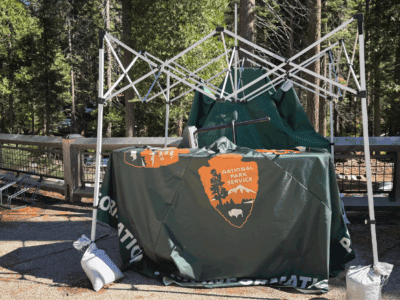A Rock and a Hard Place
Reform of hard rock mining law is important to both protect the environment and ensure we have access to critical minerals
One issue that has come up in recent permitting reform proposals, including the Bipartisan Problem Solvers Caucus proposal that I discussed recently, is how we regulate mining on federal lands. Much of the minerals production in the United States occurs on federal lands, and that includes much of the critical minerals such as rare earths that are required for sophisticated computing technology, batteries, and renewable energy production.
The issue is that hard rock mining on federal land is governed by a hybrid of two kinds of law. First, there is a 19th century law, the Hard Rock Mining Act, that grants broad rights for individuals or corporations to go on the public lands, explore, identify, and develop mineral deposits. Second, there are 20th century laws that seek to manage the environmental impacts of activities on federal lands, including the Endangered Species Act (ESA), National Environmental Policy Act (NEPA), and public lands laws for the Bureau of Land Management (BLM) and the Forest Service. Even within those categories there are contradictions. The Hard Rock Mining Act is, on the one hand, very generous to mining activities, since it imposes minimal fees and allows broad access for exploration and development. On the other hand, the Mining Act is also a relic from a very different era of mining, and is not well designed to manage the large-scale processing of millions of tons of rock that are essential to modern mining. The interaction of the Mining Act and the ESA, NEPA, and other environmental laws is contentious, with significant issues still to be fully resolved by the courts – such as whether the BLM has the ability to reject a proposal for a mining operation on its lands because of its environmental impacts.
One particular question that has been a flashpoint recently has been the extent to which mining companies operating on federal lands can use public lands for the disposal of the massive amounts of rock waste that are the inevitable byproduct of contemporary mining operations. Under the Mining Act, mining operators can locate a mining claim on federal land by paying a minimal fee and filing the appropriate paperwork – in theory, that claim is only valid if it is connected with the discovery of valuable minerals on the relevant federal lands. But that requirement is infrequently enforced by the federal land management agencies. And in practice, mining operators have used mining claims as a way to dispose of their massive amounts of rock waste – essentially using public lands as waste disposal sites for minimal costs – without demonstrating the validity of the claims.
In Ctr. for Biological Diversity v. U.S. Fish & Wildlife Serv., 33 F.4th 1202 (9th Cir. 2022), frequently called the Rosemont decision after the mine that was at issue in the case, the Ninth Circuit held that a company cannot use mining claims federal lands for mine waste disposal (or other operations) where there is evidence that there are no valuable minerals on the mining claim that can make the claim valid. Detailed analysis of the opinion is here. The result puts into question the legality of a significant number of mining operations across the western US, and the mining industry has called for changing the law to authorize historical practice. A bill passed the House this year (HR 3495) that would do just that, and the Problem Solvers Caucus legislation calls for doing the same thing.
There are good arguments, even environmental ones, for some level of federal support for mining activities on federal lands. Decarbonization requires development and large-scale deployment of a range of clean energy technologies that depend on a range of minerals, including rare earths. Reliance on imports from other countries – especially China – for those minerals leaves the US vulnerable to external political pressure (as China has done multiple times in constraining rare earth exports).
But it is also true that the mining industry in the United States has a history of significant environmental damage. And while it may well be the case that modern mining in the US will be less environmentally damaging than mining in other parts of the world, we still may wish to ensure that mining here achieves high environmental standards.
There’s a deal to be done here. Modern mining cannot be performed without large areas for disposal of waste rock. Creating a legally secure pathway for allowing for that disposal is an important step to helping advance domestic minerals production. But the public – the owners of these lands – should get both guarantees that the overall mining production that is the basis of that waste is meeting high environmental standards, and that the public is getting some of the value of the mineral production activity that is based on the public lands. (Right now, mining operations pay minimal amounts for their use of the public lands.) Any fix to the Rosemont case should thus include (a) providing land management agencies with the clear power to reject individual mine proposals, and setting lands aside from mining production where other resource values from those lands are high; (b) establishing appropriate fees paid for by mining operations to ensure that clean-up from mining operations meets high environmental standards; (c) a fee for use of the lands for waste disposal that reflects a reasonable share of the value of the overall mining operation (taking into account the necessary risks and uncertainties of mining). (The second component is also in the Problem Solvers Caucus proposal.)
The goal here – as should be the case in any discussion of permitting reform – is, as far is possible, to set rigorous standards, but provide clarity and certainty about those standards and their applications. The former helps us achieve environmental goals; the latter will make it easier for regulated parties to meet those standards, and in many cases advance activities that are essential to achieving important environmental objectives.






Unfortunately, mining companies already have the opportunity to use public lands for their waste rock through the use mill site claims. The law limits these claims to five acres, but the D.C. Circuit upheld Interior rules that allow unlimited numbers of mill sites for every mining claim. It was a poorly reasoned 2-1 decision, that ironically, relied on Chevron to reach that result, shortly before it was overturned by Loper Bright. We may need additional mining in this country but we don’t need to use our public lands to allow the disposal of massive quantities of waste rock. The Rosemont mine proposes to use more than four square miles of national forest land for that purpose. This is land that can never properly be reclaimed for any reasonable public use. A much better alternative would be to exchange the land for other land that the government might need for conservation or other purposes. It would even be better to sell the land for its fair market value, using the proceeds to protect other public land resources. Legislation that streamlined the process for these solutions would be a much smarter approach. It should still require a modest but comprehensive environmental review, but it might also establish a strict timetable for completing the necessary work.
Thanks for the thoughtful comment Mark. Two reactions.
(1) The Rosemont decision was apparently important enough for *someone* to want it in the Problem Solvers proposal. I assume that was the mining industry. So they have some desire to use that route, as opposed to mill sites. Perhaps because there is the possibility of the mill site regulation being reversed by a future administration (of course, that would raise a statutory interpretation question…). I’m happy for any deal to be a more unified system that also addresses mill sites too. Again, industry may want more certainty and clarity, and would be willing to get things in return as well.
(2) As you note, there are good reasons to require mine waste disposal to occur on private lands, and to make that happen through land exchanges. But then you do have to streamline the proposal to make it more predictable and faster. Land exchanges currently are notorious for being slow and uncertain. Or, as you note, selling the land for market value is an option, though that would likely have to be in return for reducing any payments for the value of the mining operation (as I noted in the original blog post).
So I agree these are good ideas to include in any proposal. But to me they are adjustments to any deal that should occur — the glimmers of which you see in the Problem Solvers Caucus proposal.